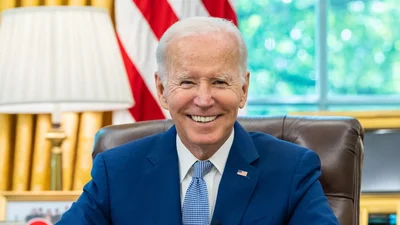The Congressional Record is a unique source of public documentation. It started in 1873, documenting nearly all the major and minor policies being discussed and debated.
“REAUTHORIZING THE STEEL AND ALUMINUM ENERGY CONSERVATION AND TECHNOLOGY ACT OF 1988” mentioning the U.S. Dept. of Energy was published in the House of Representatives section on pages H2481-H2483 on April 26, 2005.
The publication is reproduced in full below:
REAUTHORIZING THE STEEL AND ALUMINUM ENERGY CONSERVATION AND TECHNOLOGY
ACT OF 1988
Mrs. BIGGERT. Mr. Speaker, I move to suspend the rules and pass the bill (H.R. 1158) to reauthorize the Steel and Aluminum Energy Conservation and Technology Competitiveness Act of 1988, as amended.
The Clerk read as follows:
H.R. 1158
Be it enacted by the Senate and House of Representatives of the United States of America in Congress assembled,
SECTION 1. AMENDMENTS.
(a) Authorization of Appropriations.--Section 9 of the Steel and Aluminum Energy Conservation and Technology Competitiveness Act of 1988 (15 U.S.C. 5108) is amended to read as follows:
``SEC. 9. AUTHORIZATION OF APPROPRIATIONS.
``There are authorized to be appropriated to the Secretary to carry out this Act $12,000,000 for each of the fiscal years 2006 through 2010.''.
(b) Steel Project Priorities.--Section 4(c)(1) of the Steel and Aluminum Energy Conservation and Technology Competitiveness Act of 1988 (15 U.S.C. 5103(c)(1)) is amended--
(1) in subparagraph (H), by striking ``coatings for sheet steels'' and inserting ``sheet and bar steels''; and
(2) by adding at the end the following new subparagraph:
``(K) The development of technologies which reduce greenhouse gas emissions.''.
(c) Conforming Amendments.--The Steel and Aluminum Energy Conservation and Technology Competitiveness Act of 1988 is further amended--
(1) by striking section 7 (15 U.S.C. 5106); and
(2) in section 8 (15 U.S.C. 5107), by inserting ``, beginning with fiscal year 2006,'' after ``close of each fiscal year''.
The SPEAKER pro tempore. Pursuant to the rule, the gentlewoman from Illinois (Mrs. Biggert) and the gentleman from Illinois (Mr. Lipinski) each will control 20 minutes.
The Chair recognizes the gentlewoman from Illinois (Mrs. Biggert).
General Leave
Mrs. BIGGERT. Mr. Speaker, I ask unanimous consent that all Members may have 5 legislative days within which to revise and extend their remarks on H.R. 1158, as amended, the bill now under consideration.
The SPEAKER pro tempore. Is there objection to the request of the gentlewoman from Illinois?
There was no objection.
Mrs. BIGGERT. Mr. Speaker, I yield myself such time as I may consume.
Mr. Speaker, I rise today in support of H.R. 1158, the Steel and Aluminum Energy Conservation and Technology Competitiveness Act. I would like to commend my colleague, the gentlewoman from Pennsylvania
(Ms. Hart), for reintroducing this important legislation which she originally introduced and which passed the House in the 108th Congress.
There are many reasons why we should pass this legislation today.
First of all, the metals industry is highly energy-intensive. Taken together, the steel, aluminum, and copper industries account for more than 10 percent of industrial usage in the United States. President Bush's national energy plan recognized that improving energy efficiency in our most energy-intensive industries could yield large improvements in productivity, product quality, safety, and pollution prevention.
Second, we have a strategic national interest in helping our metals industry remain competitive. For any industry, energy efficiency means increased production without increased energy consumption or costs. Improving energy efficiency helps the bottom line, making American metal products more competitive on the global market. That means more jobs here at home.
But energy efficiency is more than that. Reducing energy use means reducing our emissions of pollutants and greenhouse gases, and increasing our energy security. In this way, energy efficiency just makes sense, dollars and cents, for the Nation.
H.R. 1158 recognizes this fact and puts in place a new requirement that program managers consider the potential for technologies to reduce greenhouse gas emissions when developing their research plans. In this way the bill updates the plan to address current concerns about the impact of energy-intensive industries.
For these reasons, both the Committee on Science and the full House passed a similar bill by voice vote in the 108th Congress, and the Committee on Science approved H.R. 1158 by voice vote in March.
I encourage my colleagues to demonstrate support for this bill again today.
Mr. Speaker, I reserve the balance of my time.
Mr. LIPINSKI. Mr. Speaker, I yield myself such time as I may consume.
Mr. Speaker, I want to join the gentlewoman from Illinois (Mrs. Biggert) in support of H.R. 1158, the Steel and Aluminum Energy Conservation and Technology Competitiveness Act. I commend her for her support today, and I also commend the gentlewoman from Pennsylvania
(Ms. Hart) for taking a leadership role in pursuing this legislation dating back to the last Congress.
This bill will benefit our constituents, Democrat and Republican alike. It has been a pleasure to have this opportunity to work in a bipartisan effort to bring this measure to the floor today.
Today, almost one-quarter of the steel production in the United States is in the Chicago, northern Indiana region. But, unfortunately, our country no longer hails as the world's leading producer. My constituents in the Third District of Illinois have been especially impacted by the changes that have come from increased foreign competition. In my area, families and communities have been badly hurt by job losses. But the impact has also been felt in other places around the country.
My father-in-law in Johnstown, Pennsylvania lost his job as a steelworker when his plant was forced to close. This bill will help prevent further losses of good American jobs by increasing the competitiveness of our domestic manufacturing.
I also strongly believe that the overall prospects for the American steel industry have an important bearing on our future economic security as well as our national security. For these reasons, I strongly support this bill, which has become known as the metals initiative.
This bill, improving upon a program which was originally passed by the 108th Congress, authorizes Federal cost-sharing of research. The goals of this research are threefold: increased competitiveness for the U.S. metals industry, energy efficiency, and a cleaner environment.
The development of technologies that will increase energy efficiency as well as improve our international competitiveness is key to maintaining our national security, both from an economic and a military perspective. Likewise, the implementation of more environmentally friendly technologies that reduce emissions or reduce demand for petroleum will result in both a public benefit, a cleaner environment; and a private benefit, a cut in the cost of production.
The metals initiative has three very important provisions that make it a commonsense vehicle for pursuing cooperation between government and industry. First, there is a payback provision which requires that the Federal investment be repaid out of net proceeds of commercialization once the technology is developed. This provision prevents the program from taking on the negative connotations of a mere Federal subsidy. Instead, it provides a framework for these domestic companies, their employees, and the communities that rely upon the revenue bases to benefit from the new technologies that are made possible through this public-private partnership.
The second provision that makes this partnership work is the 70 percent/30 percent government-industry cost-share. When industry puts their own money at risk, the projects get senior management attention. Historically, these types of steel research and development projects have yielded results that meet national needs and are highly marketable, producing a win-win situation.
{time} 1415
The third provision calls for industry ownership of intellectual property produced from the research. Twenty-five years of experience under the Bayh-Dole Act has shown that when ownership of patents is left with inventors, the likelihood that patents will be put to commercial use dramatically increases. This factor creates opportunities for economic growth and better job security for hard-
working Americans.
The Metals Initiative is simply a great example of how public private partnerships can benefit both taxpayers and share holders. It will help enrich the overall economy, offer much needed stimulation for the growth of technology in key industries, and protect the environment. With recent changes in trade laws and other international forces at work, we owe it especially to the people who work in these industries. All Americans benefit from such commonsense programs. I urge my colleagues to support H.R. 1158 today and vote ``yes'' on this bill.
Mr. Speaker, I reserve the balance of my time.
Mrs. BIGGERT. Mr. Speaker, I yield such time as she may consume to the gentlewoman from Pennsylvania (Ms. Hart), who is the sponsor of this legislation.
Ms. HART. Mr. Speaker, I thank the gentlewoman from Illinois
(Chairwoman Biggert) and ranking member (Mr. Honda) of the Energy Subcommittee for working together to make sure that this bill moved forward. I am pleased for their support and also for the support of the Science Committee chairman, the gentleman from New York (Mr. Boehlert), and ranking member, the gentleman from Tennessee (Mr. Gordon), for moving the bill through committee and also for their support. I especially thank the gentleman from Illinois (Mr. Lipinski), who just spoke, for working with me on this legislation, H.R. 1158, the bill to reauthorize the Steel and Aluminum Energy Conservation and Technology Competitiveness Act.
The steel industry is one of the most energy-intensive industries with energy accounting for a major portion of the cost of production. Improvement in energy efficiency is therefore an important component to reducing the cost of steel and thereby making us more competitive.
Recent experiences have shown that energy costs per unit of output of steel can be reduced significantly through more intelligent capital-
intensive investments in modifications to existing plants and equipment and conversion to more energy-efficient processes.
Investment made at the government level in partnerships with industry to stimulate achievement of this increased energy efficiency has shown great results over the years.
This legislation would reauthorize the steel and aluminum competitiveness act, which established a public private partnership, a research initiative. It is cost sharing with government and industry, focused on improving industrial energy efficiency in the steel and aluminum and fabrication industries.
The bill will result in improved energy efficiency in the domestic metals industries, thereby improving our competitiveness and also improving the cost and quality of the actual product. This efficiency offers environmental benefits through reduced emissions per unit of steel and aluminum produced. It can also help reduce the future demand for energy in this industrial sector.
The steel industry and the Department of Energy continue this partnership under the Metals Initiative and its predecessor, the Steel Initiative, even after the authorization expired; so, therefore, it is something that is successful enough to have provided with its funding.
For fiscal year 2006, the administration has only recommended $6.5 million. That is $3.8 million for steel and $2.7 million for aluminum, which is slightly more than half of the $11.1 million provided in 2004.
This legislation would reauthorize the 1988 act through 2010. Over the years, 58 steel companies and 23 research organizations participated in and benefited from this program. Two of those companies, INTEG Process Group and U.S. Steel from my area, participated in a subcommittee hearing on this bill last year and testified regarding the benefits this initiative has produced; the jobs it has obviously preserved and provided; the opportunity that it has provided in those industries as well.
The bill authorizes $12 million for this program for fiscal years 2006 through 2010, for a total of $60 million over 5 years. It is an investment that is well worth it to preserve and grow an industry that is so important to our country.
This bill is right for this industry, it is right for energy security, and it is right for our competitiveness, and it is good for the environment.
Mr. COSTELLO. Mr. Speaker, I rise today in support of H.R. 1158, the Steel and Aluminum Energy Conservation and Technology Competitiveness Act. I want to thank my friend and colleague from Illinois, Representative Biggert for her leadership, as well as Representative Melissa Hart, for her persistence in introducing this legislation in the 108th Congress and again in the 109th Congress.
I am pleased Chairman Boehlert and Ranking Member Gordon acted quickly in the House Science Committee to mark-up this bill and bring it to the floor today because it helps our steel, aluminum, copper, and other metal industries stay competitive in today's global marketplace.
H.R. 1158, the Steel and Aluminum Energy Conservation and Technology Competitiveness bill before us today authorizes the Department of Energy to develop a public and private partnership to build upon important research goals, such as energy efficiency, increasing competitiveness of the U.S. metals industries, and improving the environment. By working together, both the taxpayers and share holders can benefit from this federal cost share between the government and the metals industries.
The domestic steel industry alone has come a long way since the steel crisis began in 1988. In my home state of Illinois, the crisis has resulted in four steel companies filing for bankruptcy, including Laclede Steel and the parent company for Granite City Steel, which are in my Congressional District. Approximately 5,000 steel workers lost their jobs in Illinois alone.
Now, prices are stabilizing and the industry is restructuring and consolidating. All of this has happened without hampering the availability of competitively priced steel products. However, aggressive trade laws and other international pressures can damage the progress that was made. Therefore, it is important we continue down the path of successful recovery because the overall prospects for our steel industry can affect our future economic and national security.
As a member of the Congressional Steel Caucus, I am deeply committed to making sure the metals industries stay competitive and for these reasons, I support to this bill and urge my colleagues to do the same.
Mr. LIPINSKI. Mr. Speaker, we have no more speakers. I yield back the balance of my time.
Mrs. BIGGERT. Mr. Speaker, I have no further requests for time, and I yield back the balance of my time.
The SPEAKER pro tempore (Mr. Forbes). The question is on the motion offered by the gentlewoman from Illinois (Mrs. Biggert) that the House suspend the rules and pass the bill, H.R. 1158, as amended.
The question was taken; and (two-thirds having voted in favor thereof) the rules were suspended and the bill, as amended, was passed.
A motion to reconsider was laid on the table.
____________________







